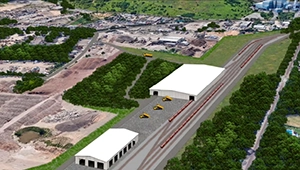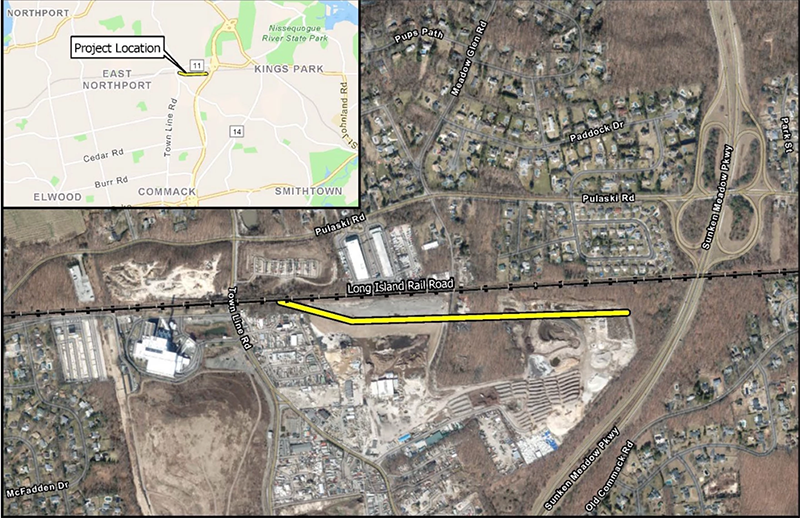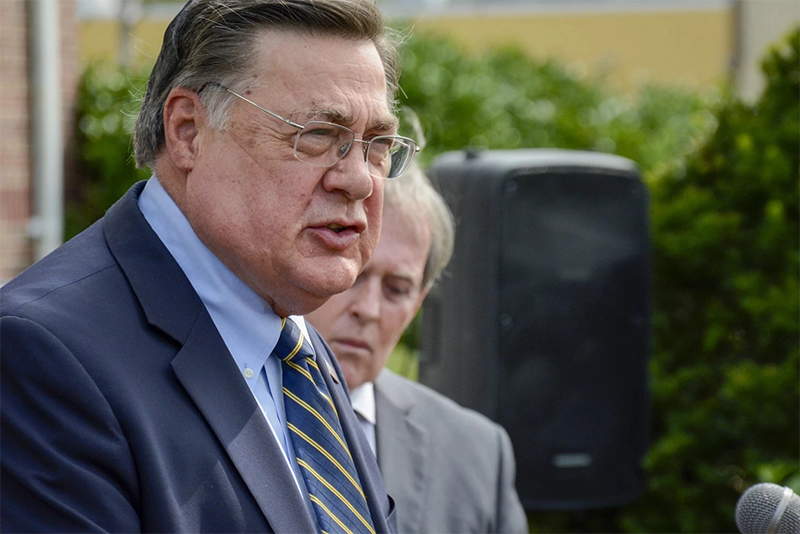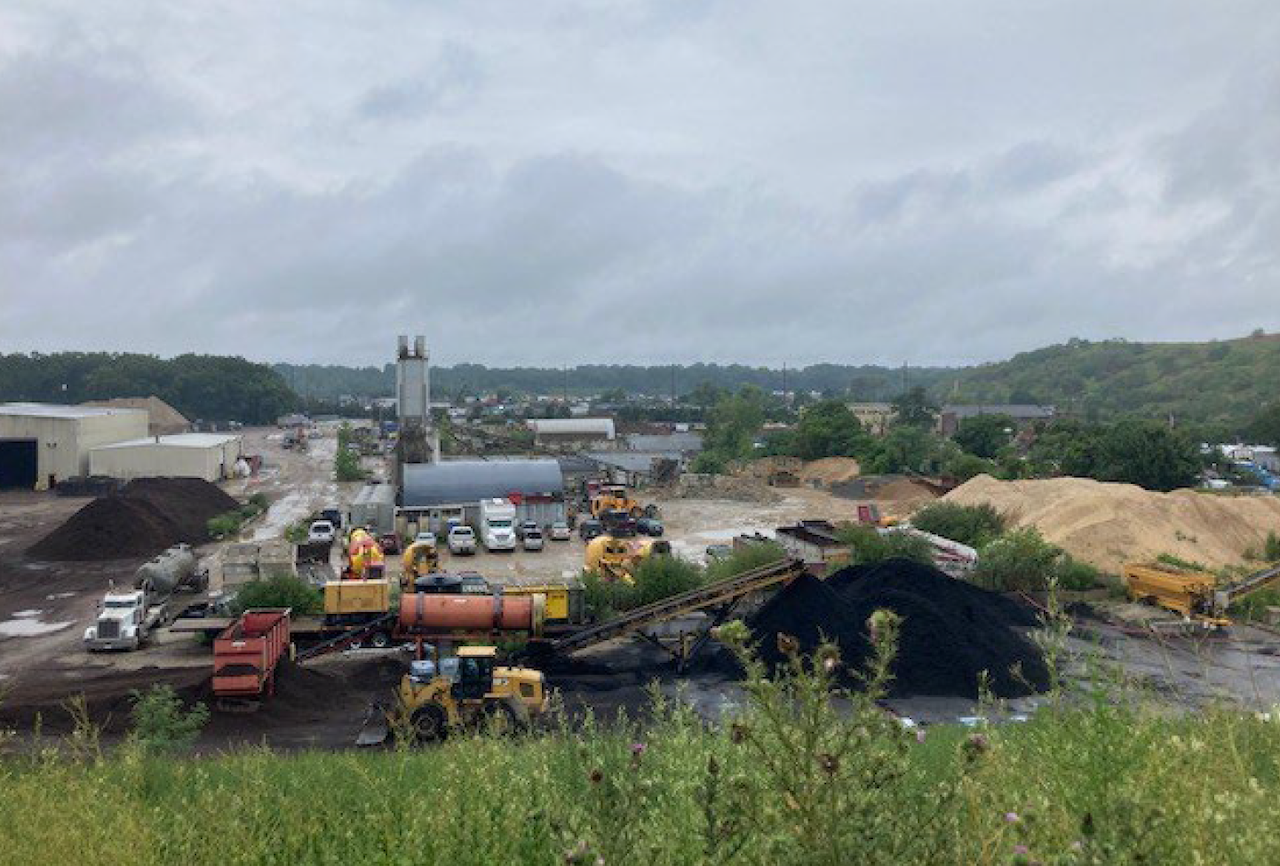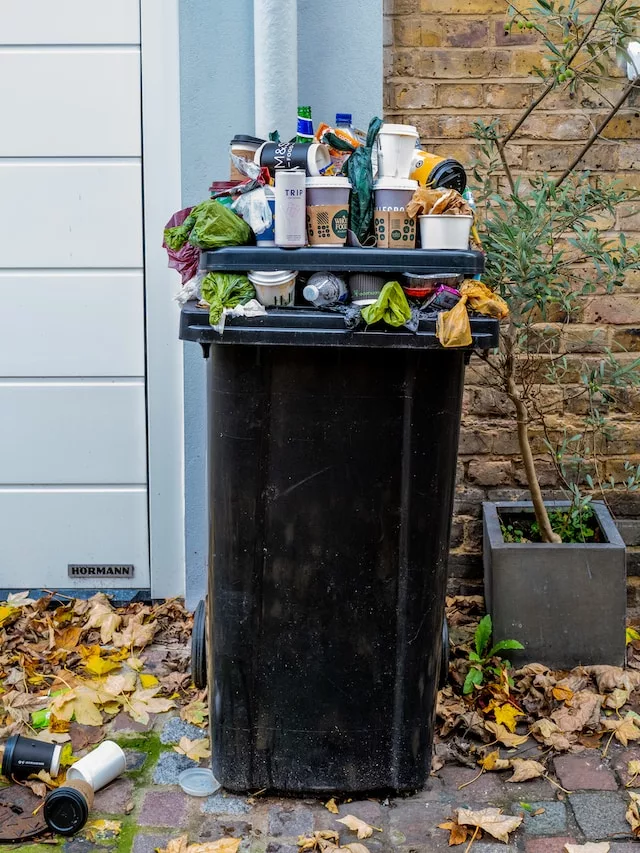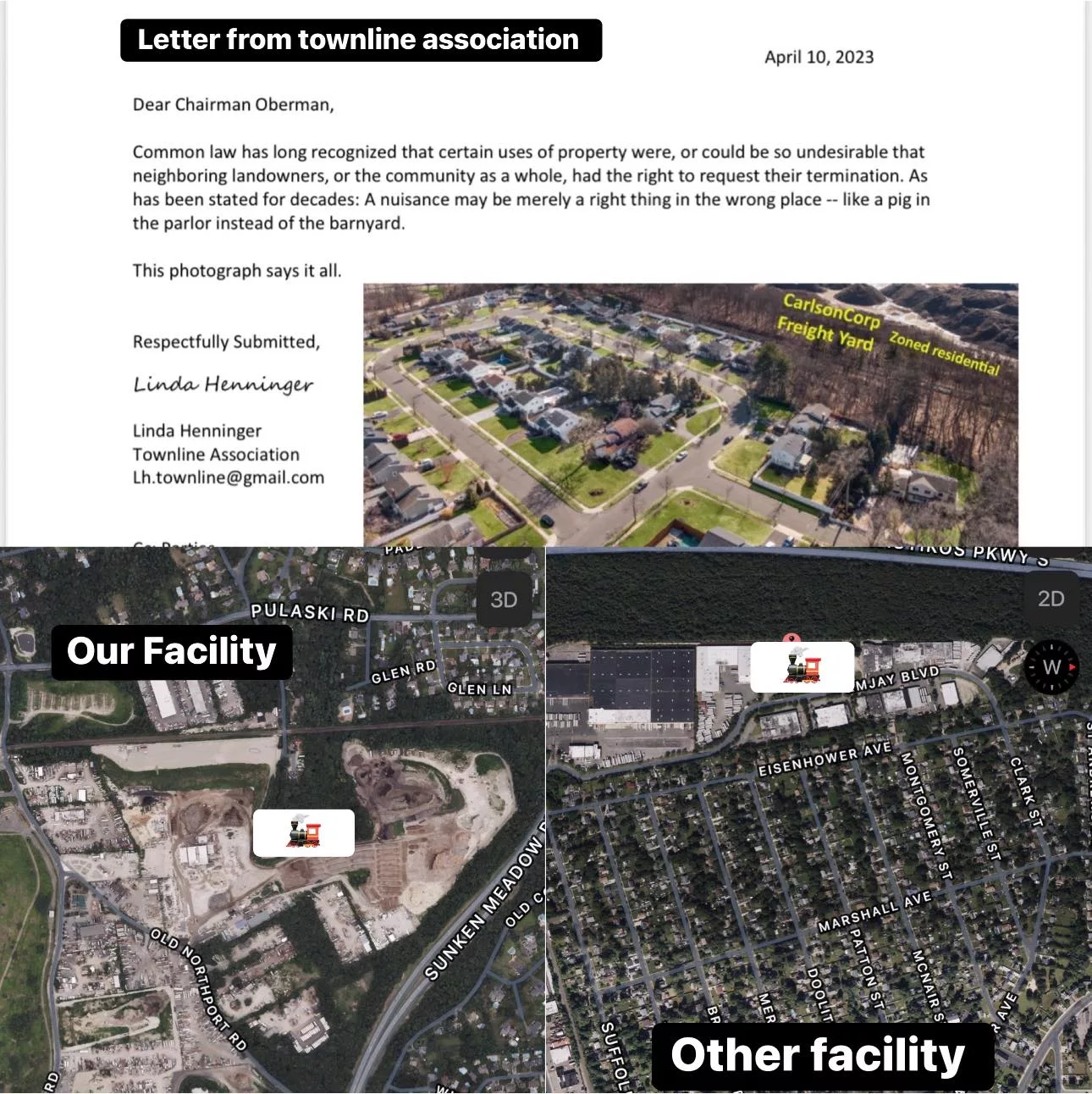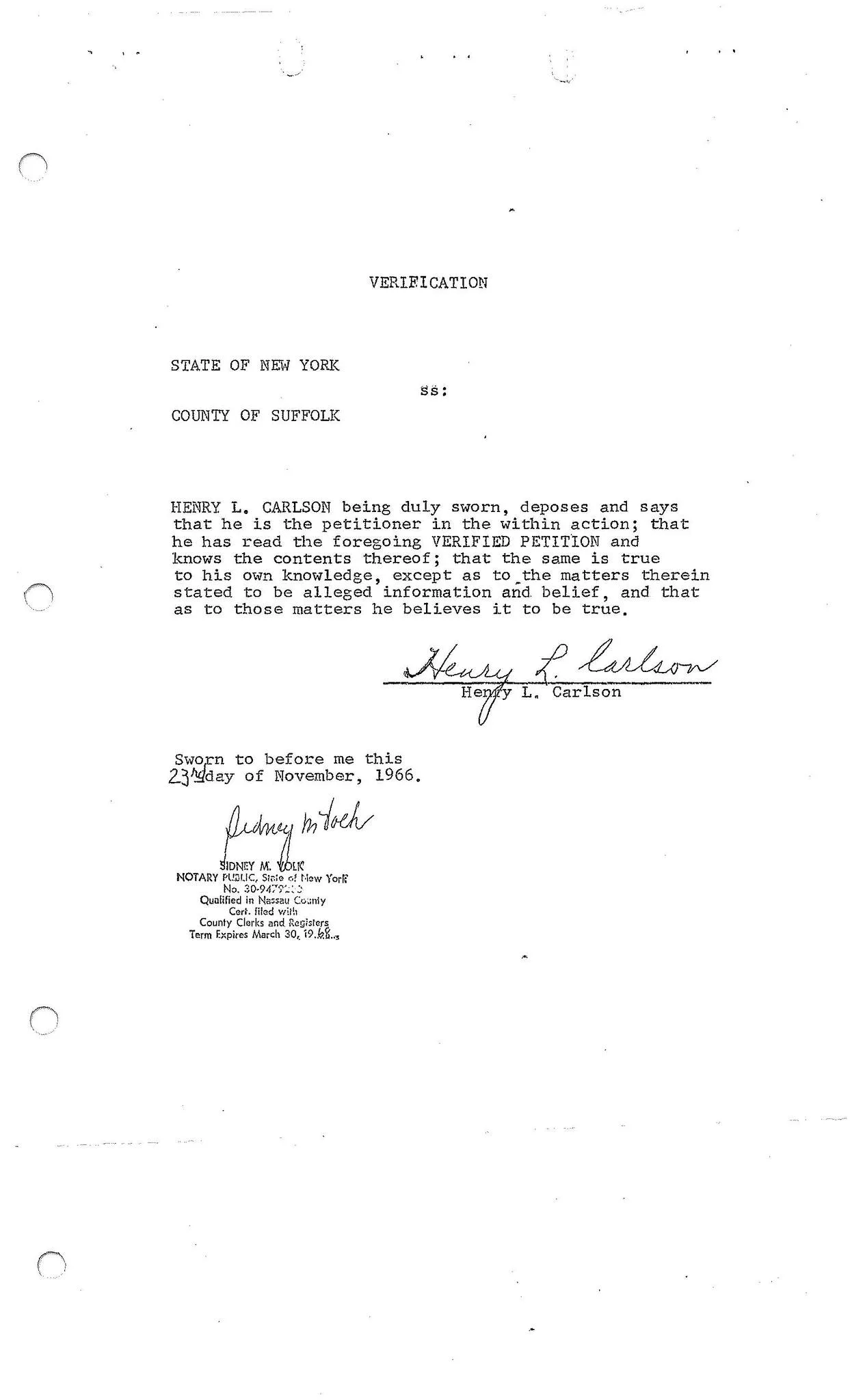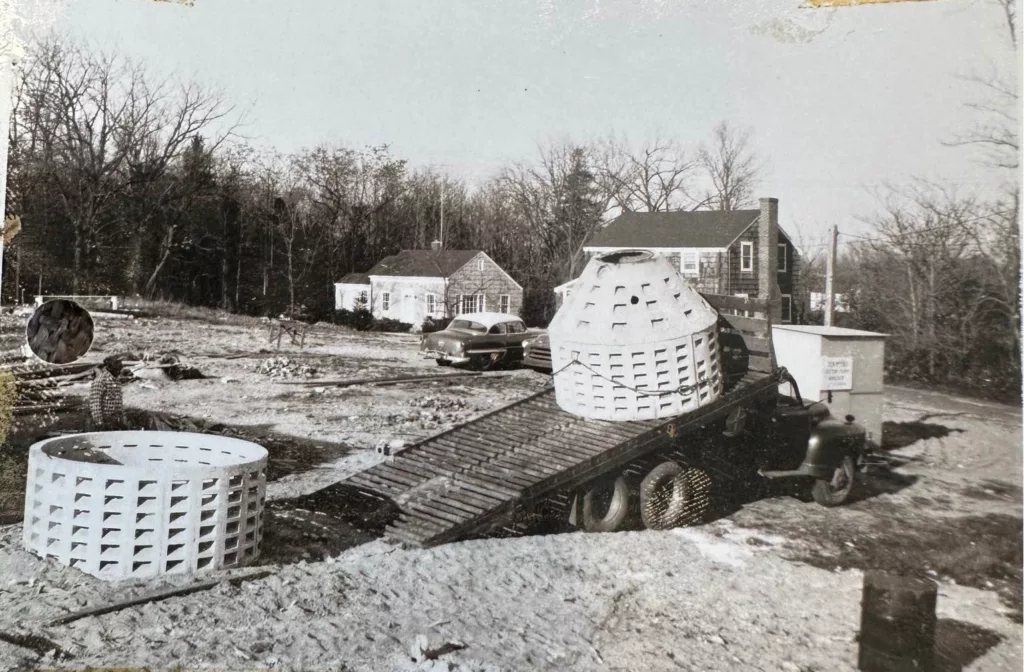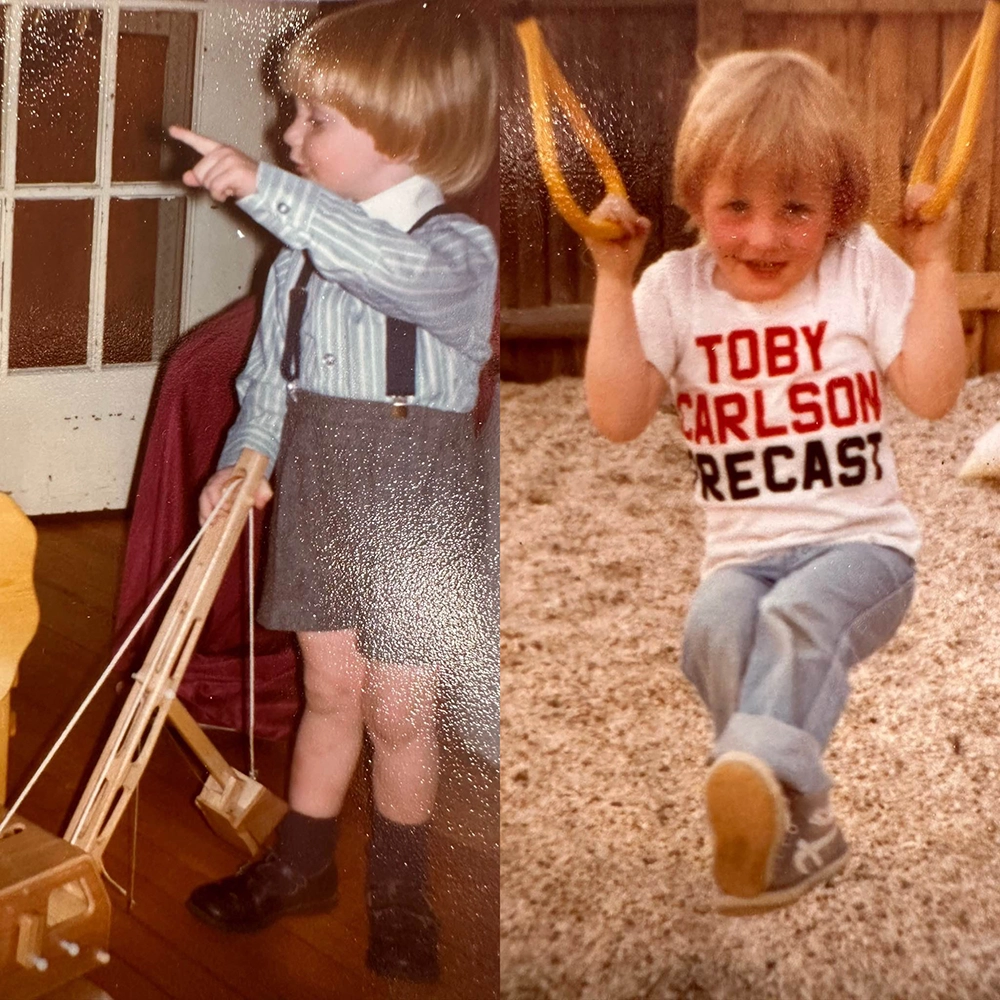It’s time to talk trash.
The average Long Islander produces more garbage while recycling less than the average American.
While any thought we have of our own trash leaves our minds as soon as it’s picked up from the curb, this unfortunately does not mean that the trash itself magically disappears.
The STB has provided a Final Environmental Assessment, including a response to comments on the Draft Environmental Assessment. These documents can be viewed via the STB.gov website under Docket No. FD 36575. View the Final Environmental Assessment & Appendices.
Currently, 70% of the trash we generate in the Huntington and Smithtown communities is incinerated at our local Waste to-Energy facility in Huntington and then disposed of as ash at the Brookhaven Landfill.

But change is coming.
Within the next few years, Brookhaven Landfill
is planned to permanently close.
With no other landfill alternatives on Long Island, our community will have to transition to moving almost all of our ash, waste and construction debris off Long Island.
Trucking is not a sustainable solution. It creates additional traffic on our highways, strains our infrastructure, contributes to pollution – and will dramatically increase disposal costs that we the taxpayers pay.
As we reach a critical point, alternative options need to be considered.
At this critical point,
we’re proposing an alternative.

Townline Rail Terminal
Rail transportation is economically, environmentally and logistically a more efficient alternative to trucking materials off Long Island. It will result in reduced emissions and traffic congestion by eliminating tens of thousands of long-haul truck trips off Long Island. The Town of Smithtown and Suffolk County have long recognized that rail is a better option than trucking. Now is the time to follow that recommendation.
Proposal Overview

Designed to handle only the disposal needs of Huntington and Smithtown.
The local Waste-To-Energy facility operates close to or at capacity incinerating the waste collected in Huntington and Smithtown. Townline Rail Terminal is proposed to match this capacity and will not be a solution to handle all of Long Island’s ash and debris.

Transport via trucks will be drastically shortened.
Presently, trucks carrying ash from the local Waste-to-Energy facility must travel approximately 7 miles – most of which is alongside residential areas – just to reach the Long Island Expressway for their trip to the Brookhaven Landfill. With Townline Rail, this trip would be reduced to about half a mile through commercial, non-residential areas.

Ash byproducts will be enclosed in steel railcar containers.
After the half mile transport via truck to Townline Rail Terminal – passing no residential homes – ash will be transferred into railcar containers, enclosed and secured. All loading and unloading of incinerated ash will occur inside the facility, minimizing dust and noise. The transfer station will be equipped with dust suppression, negative air system filtration and high-speed roll up doors.

One railcar will eliminate approximately four truckloads of materials on our roads.
Approximately 80,000 tons of ash are generated each year at our local Waste-to-Energy facility, currently resulting in nearly 4,500 truck trips to the landfill. Once Brookhaven is closed, these trucks would have to travel through and off Long Island. One railcar can hold the same amount of ash as four trucks.

One train per weekday.
Townline Rail will accommodate one train arrival and one train departure per weekday, pulling an average of 16 railcars. That’s it. There will be no trains planned on weekends. Loading and unloading of materials, which will take place in an enclosed structure, will take place under our DEC-permitted hours and will not be a 24-hour operation.

Less stress on Long Island’s only remaining C&D landfill.
Townline Rail will also be able to transport Construction & Demolition (C&D) waste by rail to landfills off Long Island. As per New York State Department of Environmental Conservation, C&D material is uncontaminated solid waste resulting from construction, remodeling, demolition, repair and land clearing – and does not include hazardous materials such as asbestos.

A more efficient round trip.
Townline Rail Terminal will facilitate the import of aggregates, equipment and lumber which is currently trucked into businesses in the Kings Park industrial corridor. This will make the return trip of the empty waste railcars more efficient, and further reduce truck traffic in our region. These materials would serve businesses within 2 miles of the Terminal, within the local industrial complex.

Additional tracks for storage and maneuverability.
The Townline Rail Terminal proposal includes only one train in and one train out per day. Train length will average 16 railcars, with a maximum train length of 27 railcars. Townline Rail will utilize tracks for loading, switching, storage, and maneuverability of the railcars.
In the Community

Less trucks on local roads.
With a half mile trip between the local Waste-to-Energy facility and Townline Rail Terminal along commercial, non-residential roads, fewer trucks will be on Long Island’s highway, reducing traffic congestion and emissions.

66% Reduction in outdoor organic operations.
Current outdoor organic operations at CarlsonCorp, Inc. will be reduced by 66 percent to accommodate indoor transfer facility operations and storage, lessening the amount of landscaping debris and materials kept on property.

Expected increase in tax revenue and jobs for the local community.
Trucking all ash generated at the local Waste-to-Energy facility off Long Island would be costly to the taxpayers of both towns. Rail transportation, a cleaner and more economical method, would help save taxpayer money. An increase in local jobs both during and after construction can also be expected.

All loading operations will be conducted during our DEC-permitted hours.
The railcars themselves do not have engines, so they will not idle or make continual noise when sitting in the yard. All materials will be transferred and loaded during DEC-permitted operating hours and will not be a 24-hour operation. At night, depending upon LIRR active hours, one train will arrive with empty railcars and then depart with loaded railcars.

Elimination of train horns in neighborhood closest to rail terminal.
As a result of the Townline Rail Terminal, the railroad crossing at Meadow Glen Road will be eliminated. Existing LIRR trains will no longer sound their horns at Meadow Glen Road – approximately 40 fewer LIRR horns per day. Further, Townline Rail trains will not add any additional train horns near Meadow Glen Road.

The Townline Rail Terminal will include a 16.4 acre landscaped berm alongside the rail terminal’s property edge that runs closest to residences.
The northern property line will include a 25 foot high berm, to be approximately 150-190 feet wide and planted with native plant species, including over 1,700 evergreen trees creating an additional buffer between operations and the existing LIRR tracks. Townline Rail operations will be approximately 400 feet from its property line, and 480 feet from the nearest residence on the other side of the tracks. All outdoor operations will be conducted at least 600 feet from any residence.

Lighting poles will be no taller than 25 feet so as to not exceed the height of the landscaped berm.
Townline Rail Terminal will utilize lighting in accordance with the American Railway Engineering and Maintenance-of-Way recommended levels of illumination for flat rail-switching yards. This means providing 2.0 foot-candles of lighting at the east and west ladders and along the pathway between the east and west end of the yard.
This project is still currently in a conceptual stage. This means it is still undergoing federal and local reviews required to identify and mitigate potential impacts. Final plans will conform to all regulatory requirements and will receive local public input.
Questions, Comments & Answers
Why so many tracks and railcars if there’s only one planned train per weekday?
The average train will be pulling around 16 cars, but the maximum will not exceed 27 cars total.
By utilizing multiple tracks, Townline Rail Terminal will be able to have any outgoing railcars loaded and queued up to be connected to the locomotive when it arrives with incoming materials and empty railcar waste containers. The locomotive will disconnect the railcars at the terminal and move to an adjacent track with the pre-loaded railcar containers, where it will connect and depart with outgoing materials. The railcars themselves will not be loaded or unloaded until daytime operating hours.
Will other areas be trucking their waste to our local Waste-to-Energy Incinerator to be processed and removed via Townline Rail Terminal?
Long Island produces more than 2.6 million tons of municipal solid waste annually – it is unfeasible and unfair to suggest that one facility in some other community should bear the burden of Long Island’s entire solid waste disposal problem. Each town will need to deal with their own waste issues as they face the imminent closure of Brookhaven Landfill. This facility will service Huntington and Smithtown and is only designed to handle the needs of these two townships, not the needs of additional Long Island towns.
The current Huntington-Smithtown Waste-to-Energy Incinerator operates close to or at capacity and no additional waste can be processed there, dispelling the myth that additional volumes of trash will come into our area via truck. There are six active or proposed train transport facilities on Long Island, all of which would provide local solutions to managing ash and debris.
What exactly is C&D debris?
C&D stands for Construction and Demolition debris, and consists of uncontaminated solid waste from construction, remodeling, repair and demolition of utilities, structures, roads, and land clearing. This can include brick, concrete or other masonry, soil and rock, wood and lumber, drywall or roofing materials, plumbing fixtures, electrical components and more.
Materials that are not considered C&D debris are: asbestos waste, garbage, corrugated container board, electrical fixtures containing hazardous liquids, fluorescent lights, carpeting, furniture, appliances, tires, drums, fuel tanks or containers greater than ten gallons in size of having more than one inch residue remaining on the bottom.
Any materials processed, shredded or pulverized beyond recognition would not be accepted.
How will this lessen trucks on the roads if goods are also being brought in on the train?
The materials imported will be aggregates, lumber and equipment for neighboring businesses. Some of these businesses are located on the same property as the rail terminal and will not need to be transported further. These materials arriving by train once a day rather than by individual long-haul trips will reduce truck volume on our Long Island roadways.
The number of trucks needed and miles traveled once the Brookhaven Landfill closes is difficult to estimate, but it is safe to say that it will increase from the current transport requirements. With a conservative estimate based on running materials to Brookhaven Landfill, Townline Rail Terminal could save 1,000,000 lane miles traveled by trucks transporting waste from and importing materials to the Kings Park Industrial area.
I don’t want this incinerator ash coming into my neighborhood.
Waste-to-Enery facilities are highly regulated and the ash generated is not classified as a toxic material. The reality is that the incinerator ash is already here, currently being trucked from our local facility located in Kings Park to Brookhaven Landfill and driven along residential areas to get to the Long Island Expressway. With Townline Rail Terminal, the ash would only be trucked for half a mile, staying within the industrial area and passing through no residential streets. It will then be brought inside a state of the art indoor facility to be transferred into an enclosed steel container before it continues transport off Long Island.
Why Kings Park? What about the other rail projects?
While there are a few rail spurs permitted to transfer waste on Long Island, none are currently permitted or equipped to transfer incinerator ash waste. Other rail spur projects are being proposed, but they are just that – a proposal. Like Townline Rail Terminal they are all in the beginnings of their project planning and will face all the same challenges before they are approved and ready for development.
This waste is our waste. It is only fair to do what we can within our community to process our waste as best as possible. While this plan still requires us to pass our burden onto other communities that still accept these materials in landfills, we should at the very least choose a more ecological and economical method as we send it to someone else’s backyard rather than ours.
There’s still one more ashfill on Long Island, why can’t we send our ash there?
The Babylon ashfill takes a fraction of the amount of incinerator ash that the Brookhaven landfill accepts on an annual basis – because it only accepts ash from the Waste-To-Energy Facility local to Babylon – and is expected to hit its capacity within the next four years.
Diesel truck or diesel train, what’s the difference?
While both vehicles are powered by diesel, trains are still vastly more economical than trucks. In addition to lessening the truck trips needed overall, diesel trains are 3-4 times more fuel efficient than diesel trucks on average. Switching to rail transport would lessen the volume of traffic congestion on the roads, that currently has vehicles spending more time in traffic and creating more emissions.
If this project will result in less trucks on the road, why is there still space included in the proposal layout for a fleet of trucks?
Although our proposal will result in fewer trucks on the road, moving incinerator ash by rail and providing rail service to local businesses will still require some use of trucks. We also utilize trucks for purposes not related to the proposed Townline Rail Terminal. Our proposed layout includes space for our fleet because our rail and non-rail operations will still require trucks that will need to be parked and serviced.
How is this going to affect Long Island’s sole-source aquifer?
The sole-source aquifer is the primary reason why the Long Island Landfill Law was passed in 1983, because of the negative impact from landfilled municipal solid waste on our only source of freshwater. Storing incinerated ash and then transporting it in steel covered rail cars off Long Island will not have an impact on the aquifer.
If you have any questions about the project please feel free to reach out to us.
Townline Rail Terminal will provide sustainable and cost competitive transportation alternatives for local businesses to harness, protecting the existing tax base and minimizing the impact of future local growth.
Further Information

View and download documents related to Townline Rail Terminal or about Long Island Waste Management.

Visit the Town of Smithtown website to view their Questions & Answers page for Townline Rail Terminal.

Learn more about the Carlson family history of construction and manufacturing in Kings Park and on Long Island.
